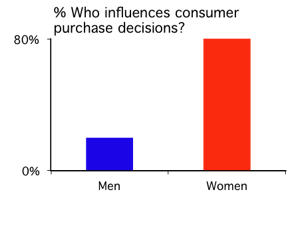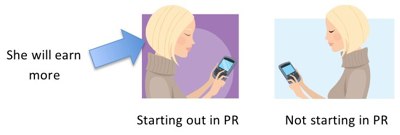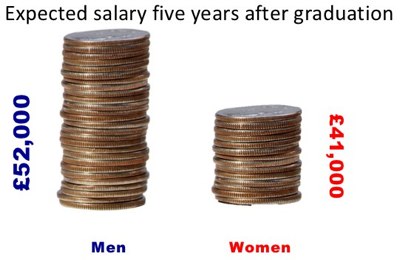Nowadays, women and men work side by side; achieving the same levels of education, being rewarded with the same qualifications and landing the same jobs at the same companies. In fact, research shows that the latest social and consumption trends are generally being driven by women. Avivah Wittenberg-Cox, CEO of 20-First, one of Europe's leading gender consultancies, says that 80 per cent of consumer purchasing decisions in the US are completed by women. In commerce too, buying decisions are no longer just driven by men; the prominence of female consumers is rising worldwide. For example, women influence 60 per cent of new car purchases in Japan and make up approximately 47 per cent of PC users in Europe. The Economist even went so far as to imply that Women were the most significant factor behind changes occurring in the global marketplace, by saying: "Forget China, India and the internet: economic growth is driven by women".

And few industries have mirrored this change as closely as the Public Relations industry. Formerly dominated by men, women now outnumber their male colleagues by a ratio of approximately 3:2 – enormously different to when a similar statistic was published in 1987 when figures showed men outnumbering women by 4:1. In short, the field of Public Relations has changed from a male dominated market to a predominantly female profession, fulfilling Don Bates' worrying 1980's hypothesis that "If women become a majority in public relations, the practice will be typecast as 'women's work' "

The pay gap between men's and women's salaries is the quintessential feminist topic of conversation nowadays. Given that women are now responsible for buying and selling more than ever before, it's no surprise that women believe they should be earning more too.
Jim Hutton, associate Professor of marketing and communications at Fairleigh Dickinson University, and an expert in statistical interpretation, conducted research which analysed PR salary data and looked even deeper into explaining the pay gap issue. This research was inspired by PR week's 2001 Salary Survey report.
At first glance, the report confirmed that statistical pay disparity exists. According to Jim Hutton, assuming that the salary differential is the result of discrimination is completely illogical. The research showed that 'years of experience' accounted for 26% of the difference in salaries. Another important point raised was that on average, men tend to work longer hours than women, which accounted for 4% of the salary gap.
Other explanations for the gap included the type of organisation the employee worked for - the survey showed that men more often than women, work in corporate PR where pay tends to be better. Men also tend to work in better-paid areas such as crisis or reputation management, which accounted for another 2% of the gap.

Also, James Hutton's research concluded that age affects the salary gap, accounting for another 2% of the variation. The summary of Hutton's research shows that only one per cent of the salary gap accounts for gender differences.
As Hutton's study implied, there is still on average a 1% pay differential which could potentially be due to employers prejudice against female workers. However, statistics show that of all working women in the USA, 62 per cent of women perceive family or personal obligations as an obstacle to promotion.
The Harvard Business Review also concluded that women are statistically more likely to choose family over career, as it's 2002 survey showed that out of the 93 per cent of women who had taken career breaks and intended to get back to work, only 74 per cent did so, and only 40 per cent came back into a full time position. All these factors have a major impact when it comes to employers considering pay rates and career promotions in the company.
Grunig et al. (2001) acknowledge another interesting fact – women entering public relations earn a better wage than women entering almost all other occupations.

In conclusion, the fact that there is a gap in salaries between women and men is a widely known and widely disputed topic. Indeed, Marilyn Davidson at Manchester Business School found that women graduates seem to have lower expectations of their earning power than their male counterparts. However, as various researchers have shown, the pay gap between men and women in PR is not solely or even mainly due to gender. Other important variables, such as level of experience, age, and the field in which the person is working also contributes to this difference.

The 'glass ceiling' attitude of early practitioners such as Bates no longer holds true: women are now holding the top PR posts at some of the world leading corporations such as Microsoft, Boeing, National Geographic, Barnes & Noble and Starbucks.
The role of women within the workplace is fast changing and traditional approaches are becoming a distant memory. As a result, gender is no longer the main reason for differences in salary in PR.
References:
- Chrystia Freeland Women are the hidden engine of world growth (2006)
- The Economist(2006) "The Battle for Brainpower", 7 October.
- Harvard Business Review Online(2007) "How to manage the Most Talented", March.
- BBC news : Why XX must think like XY to earn more K
- Office for National Statistics: Gender Pay Gap
- PR Week: ANALYSIS: Salaries - Sex, lies and multiple regression analysis:
- Grunig et al (2001) How Gender Influences Practice






